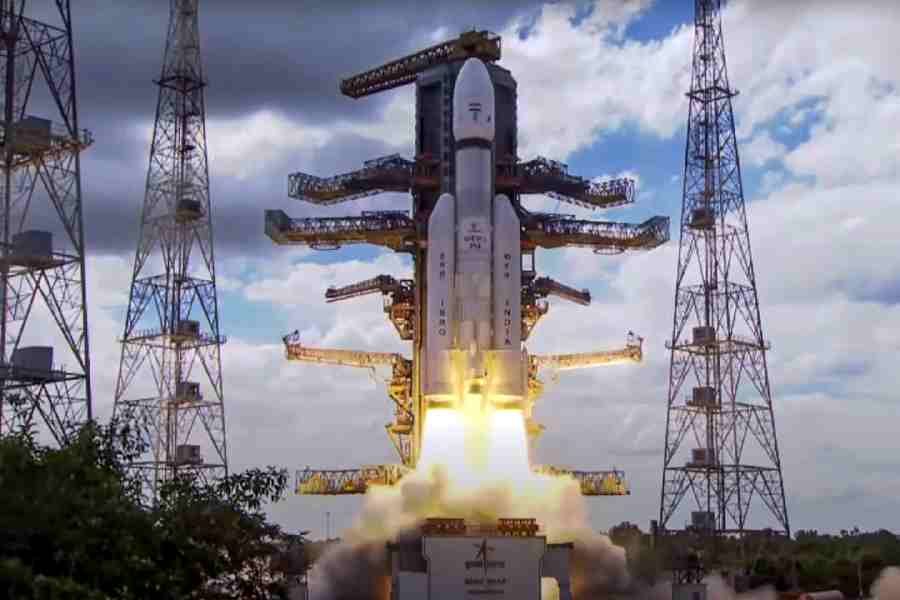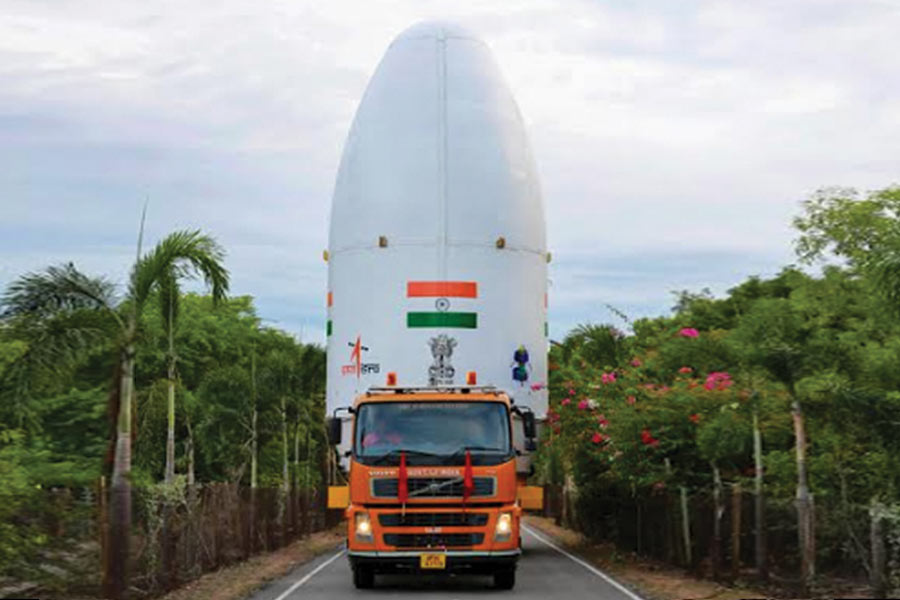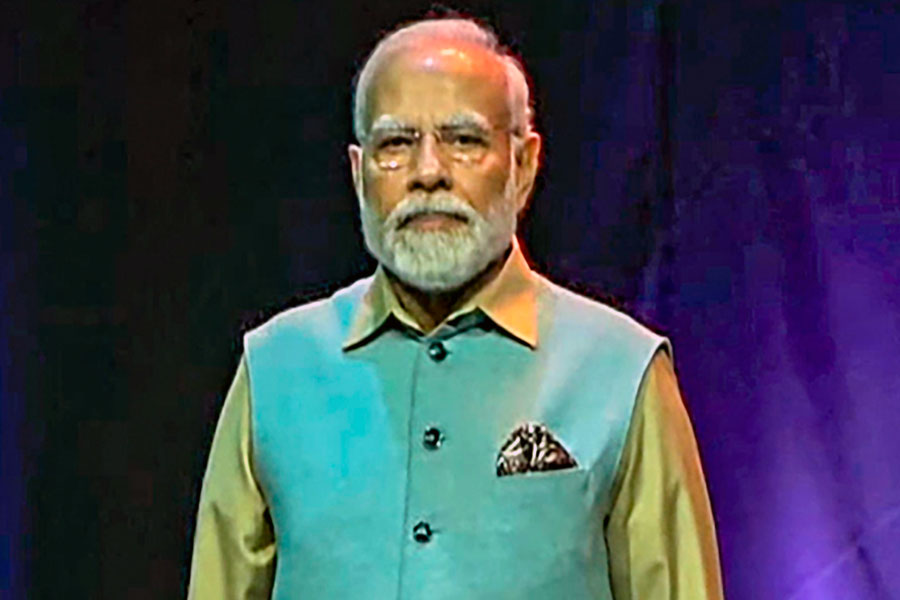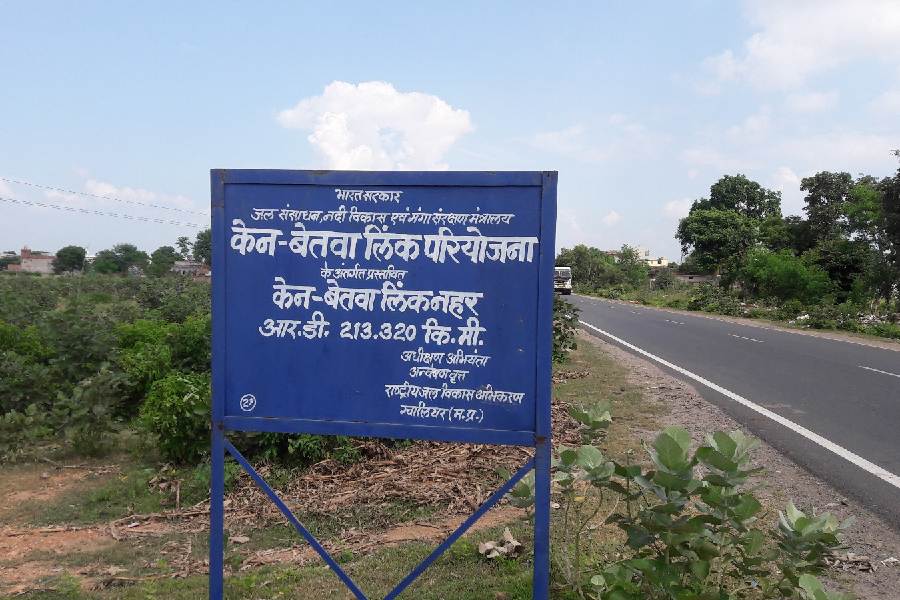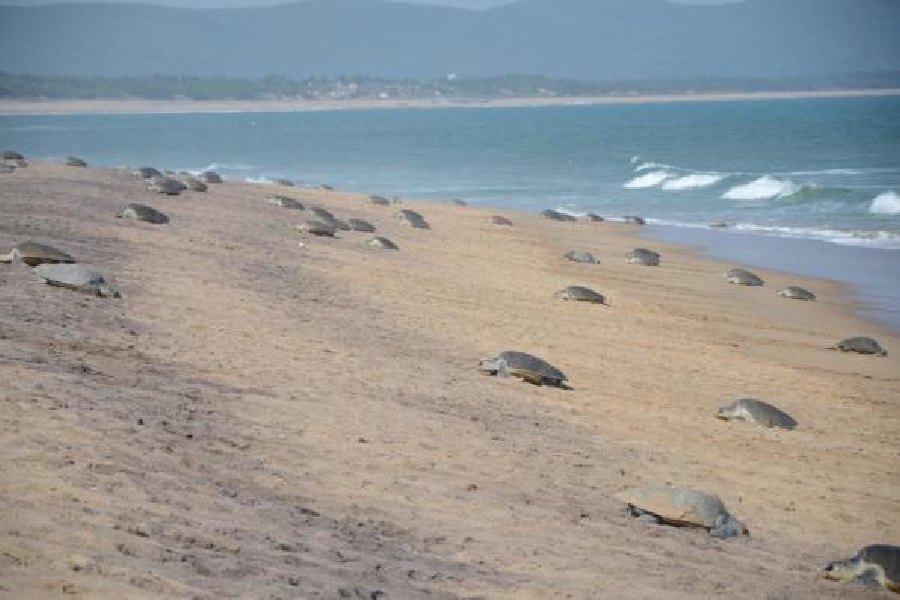- Chandrayaan-3, in its precise orbit, has begun its journey to the Moon. Health of the Spacecraft is normal
- LVM3 M4/Chandrayaan-3 Mission: LVM3 M4 vehicle successfully launched Chandrayaan-3 into orbit
- India's third moon mission Chandrayaan-3 on-board LVM3-M4 rocket lifts off from the Sriharikota spaceport
India’s Chandrayaan-3 spacecraft, set for launch at 2.35 pm on Friday, will seek to place a lander about 650km from the lunar south pole for 14 days of studies to probe the moon’s geology and makeup in an unexplored lunar region.
The 25.30 hour- countdown is already on, the Indian Space Research Organisation (Isro) said, as engineers at the Sriharikota island spaceport remotely tracked myriad systems aboard the spacecraft and the rocket that will ferry it into space.
What are the various modules of the mission?
Chandrayaan-3 — containing a propulsion module, a lander, and a rover — marks Isro’s third lunar exploration mission after Chandrayaan-1, a lunar orbiter, in 2008 and Chandrayaan-2, a lander that crashed on the moon in 2019.
Isro has picked its Launch Vehicle Mark-3 — earlier called the Geosynchronous Satellite Launch Vehicle Mark-3 and the most powerful rocket in its stable — for Chandrayaan-3’s launch.
What is the spacecraft like and what will be its planned trajectory?
The spacecraft weighs about 3,895kg at liftoff. The LVM-3 has successfully flown six times since its maiden launch in 2014, carrying heavier payloads into space. In March this year, Isro had used the LVM3 to launch a constellation of satellites for a UK company weighing a total of 5,800kg.
After a circuitous 40-day journey, Chandrayaan-3 is expected to slip into a lunar orbit and deploy the lander with the rover for a soft landing anywhere within a4.0km by 2.5km strip of lunar surface located between two craters — the Manzinus and the Bouguslawsky.
Scientists who had helped select the proposed landing area have said it meets the requirements of sun illumination, radio communication with the Earth, and sizes of its craters and boulders. The area gets sunlight for 11 to 12 days and the boulders there are smaller than 0.32 metres. The sunlight is needed for solar panels that will power the lander and the rover.
What will happen after touchdown?
After touchdown, the lander is expected to release the 26kg six-wheeled rover that will explore the lunar terrain near the landing area. Both the lander and rover are designed to remain functional for a full lunar day — or 14 Earth days.
“This is an unexplored area of the moon — there have been no landings at this latitude,” said Anil Bhardwaj, director of the Physical Research Laboratory, Ahmedabad, an Isro centre that developed spacecraft payloads for the studies after the landing.
What are the planned experiments?
Among the planned experiments is one that will use a needle-like thermometer that will be inserted up to 10cm into the lunar surface to study its heat transfer properties. Another payload will measure seismicity around the landing site. Bhardwaj said studies on heat transfer close to the surface have not been conducted earlier.
The instruments are expected to yield fresh insights into lunar geology and data on heat, if any, from the moon’s interior. Two other instruments, called spectroscopes, on the rover will probe the chemical and mineral composition of the lunar surface and rocks near the landing area.
What will happen after lift-off?
Friday's mission follows Chandrayaan-2 where scientists aim to demonstrate various capabilities including reaching the orbit of the moon, making a soft-landing on the lunar surface using a lander, and a rover coming out of the lander to study the surface of the moon.
According to scientists, around 16 minutes after lift-off, propulsion module is expected to get separated from the rocket and would orbit the earth for about 5-6 times in an elliptical cycle with 170 km closest and 36,500 km farthest from earth moving towards the lunar orbit.
The propulsion module along with the lander, after gaining speed would proceed for an over a month long journey towards reaching the orbit of the moon until it goes 100 km above the lunar surface.
After reaching the desired position, the lander module would begin its descent for a soft landing on the south pole region of the moon and this action is expected to take place on August 23 or 24, scientists at ISRO said.
Why has the moon's south pole region been chosen?
The moon's south pole region has been chosen because the Lunar South Pole remains much larger than that at the North pole. There could be a possibility of presence of water in permanently shadowed areas around it.
The significance about Chandrayaan-3 mission, unlike its unsuccessful predecessor, is that the Propulsion Module has a payload -- SHAPE -- Spectro- polarimetry of HAbitable Planet Earth to study earth from lunar orbit.
ISRO said the SHAPE is an experimental payload to study the spectro-polarimetric signatures of the Earth in the near-infrared wavelength range.
What else?
Apart from the SHAPE payload, the Propulsion Module's main function is to carry the Lander Module from launch vehicle injection orbit to till lander separation.
The lander module after landing on the surface of the moon has payloads including RAMBHA-LP which is to measure the near surface plasma ions and electrons density and its changes, ChaSTE Chandra's Surface Thermo Physical Experiment -- to carry out the measurements of thermal properties of lunar surface near polar region and ILSA (Instrument for Lunar Seismic Activity) to measure seismicity around the landing site and delineating the structure of the lunar crust and mantle.
The Rover, after the soft-landing, would come out of the lander module and study the surface of the moon through its payloads APXS - Alpha Particle X-Ray Spectrometer - to derive the chemical composition and infer mineralogical composition to further enhance understanding of lunar surface.
Rover, which has a mission life of 1 lunar day (14 Earth days) also has another payload Laser Induced Breakdown Spectroscope (LIBS) to determine the elemental composition of lunar soil and rocks around the lunar landing site, ISRO said.
(With inputs from AP in Sriharikota)

